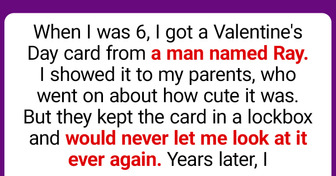Helen Hunt, 60, Stuns During Her Latest Appearance, and Her Lips Become the Center of Attention

“Is this safe to eat?” We sometimes see strange spots on our potatoes and wonder if we should just throw them away. Here are 10 “eat or toss” facts.
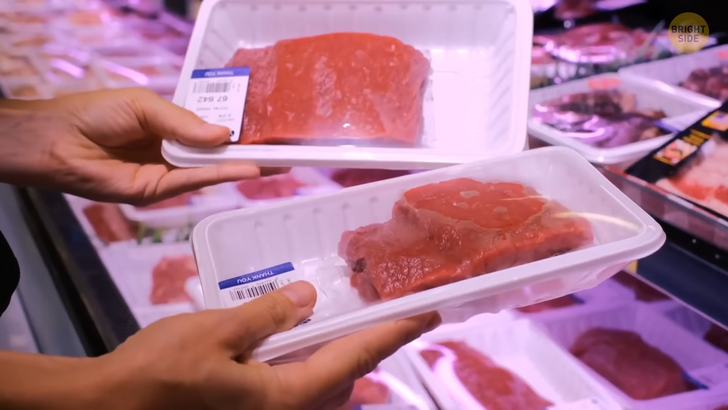
Did you know that every year 119 billion pounds of food is wasted only in the United States? Put it in perspective; this number means nearly 40% of all food in America is wasted! People throw food if they don’t have confidence in the ingredients. They are being cautious, and it makes sense, but what if the food is safe to eat and only looks weird?
The first item on the list is beef. When it comes to meat, people naturally get extra cautious. Imagine you buy some raw beef in the store. Later on, you realize it got some brown spots. If you’d toss it immediately, hear me out. This is normal; in fact, you can see brown layers also inside the beef. Bright red color equals fresh meat, huh? Not necessarily. When the meat is first cut, it’s maroon. If the meat is quickly vacuum-packaged, it will keep that shade. But if the meat is exposed to air for like 15 minutes, then oxygen will cause a change in the look to red. The redness can turn brown when the biochemical reaction starts. This can take a few hours. Workers at the grocery stores grind the meat several times a day to achieve that bright red color because they know consumers are cautious about maroon-looking beef. If the beef is wrapped in an oxygen-permeable plastic, it turns bright red after exposure to oxygen. As long as the meat smells and feels fresh and if it’s been stored properly, it should be safe to eat.
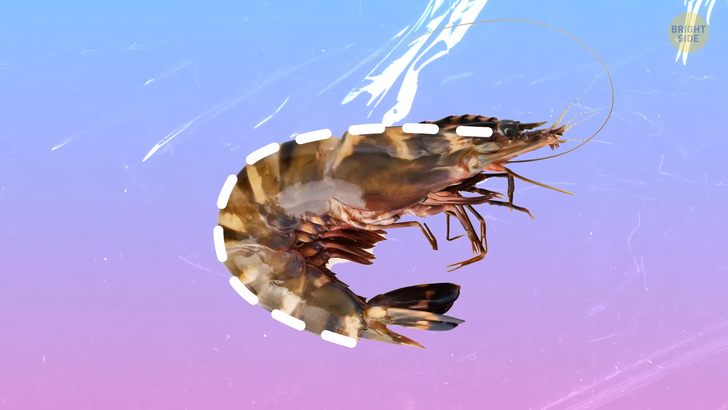
Have you ever come across dark lines under a shrimp shell? This one has a similar story to beef. Black lines on your shrimp’s flesh are related to a natural phenomenon. They gradually occur after shrimps are taken from the water. Meat is exposed to oxygen, and the blackness gets more visible over time. Here also, the pattern of the animal itself can be a factor. These black lines can be a naturally occurring discoloration on the shrimp. Think of cats. They also have different color patterns, but they are the same in terms of species. Next time you can conduct a mini-experiment in your kitchen. Put a couple of shrimp side by side and observe the mild differences in the shrimp’s color patterns. Shrimp will have a distinct bad odor when it’s no longer edible, so if it smells and tastes fresh, don’t toss it.
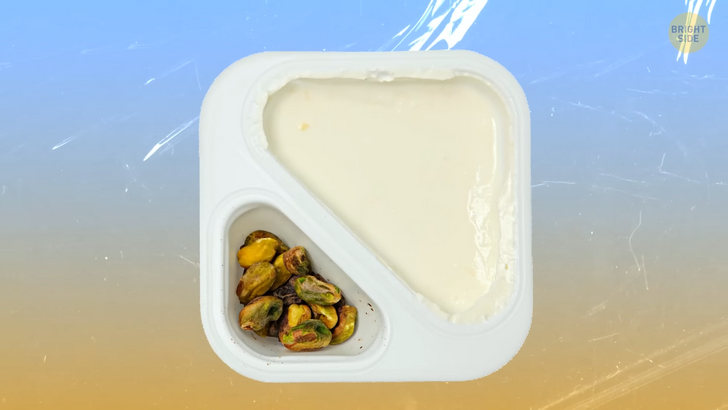
Should you eat moldy yogurt? That green substance on the surface doesn’t look appealing at all, but if you scoop it out, you seem to have clean yogurt underneath. The short answer is to toss it. The mold could be seen on the top only, but it has probably gone deep. Not to mention that it’ll taste bad. Many molds are harmless, but some produce toxic substances. Green mold is a type of Penicillium. Does this word sound familiar? That’s the same type of mold used in the antibiotic penicillin. Don’t get too excited. Eating moldy yogurt won’t magically cure bacterial infections. It only spoils your dairy product.
In 2013 there was an outbreak related to one line of yogurts. The company handed the products to stores as usual. After some time, they received customer complaints. They said that the yogurt looked like “yogurt soup” and tasted “really old.” Turns out that a type of fungus probably released some carbon dioxide. It made the product fizzy and bloating. The company and another independent scientist both said that this fungus in question wasn’t usually harmful to people. Yet more than 200 people reported becoming affected by it. So these sorts of things can still happen. You should trust your spidey sense.
If you have ever been “lucky enough” to see some mold in a freshly opened package, reach out to the manufacturer. You’ll potentially save others from facing the same scenery by notifying the company about a systemic issue and preventing potential future product waste. Plus, the company probably wants to make amends and either reimburse your sad yogurt with a happy one or, better, they’ll give you coupons for free products.

Why do avocados sometimes have brown dots inside? Technically it’s edible, but you might not want to eat it. Avocados are a source of many vitamins like C, E, K, and B6, as well as healthy stuff like magnesium, potassium, and more. The avocado works hard to become such a health storage. Nutrients, water, and sugars wander around this fruit. Yes, technically, avocado is classified as a fruit. Anyway, avocados have their own “transport channels”, like veins. These channels are normally invisible to us. Until something goes out of the ordinary. The avocado may be stored in too-cold temperatures for a longer time than it should. As a result, the tissue cells might be weakened and start to deteriorate. Experts say that after the fruit is harvested if it stays in the refrigerator for a few weeks before you buy it, vascular browning can occur. This phenomenon becomes visible after you keep the avocado at room temperature for a few days. Don’t go hard on yourself. It’s not because of you. So, should you eat it or toss it? You can eat the brown-dotted avocados, but you may want to taste them first. They might not taste good compared to a regular one.
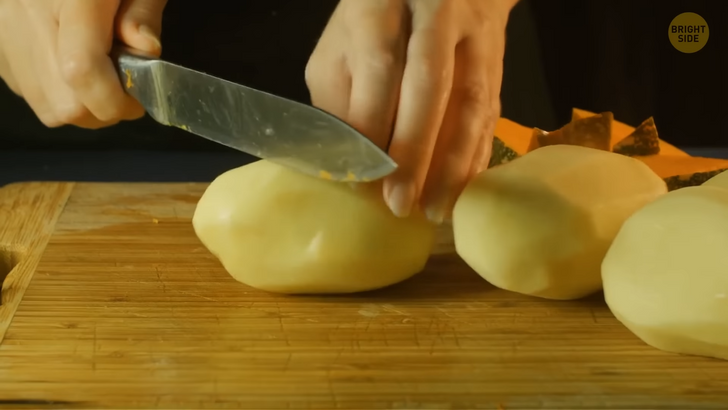
What about the white area under the potato peel? Eat or toss? This area is also like dark bruise marks, but it’s not black. If the outer layer of the potato looks normal, that odd-looking white knot is not mold. The moldy potatoes deteriorate. They’ll get softer, wrinkled, or squishy. As long as the exterior of this potato appears clean and regular, there’s probably no harmful microbial growth inside of it. These strikingly white areas can be shaped due to potatoes being bruised, possibly in the field during the harvesting period. To sum up, you can eat it.
There’s also an issue of white smears coming out when we slice potatoes. You see the marks on the cutting board. Experts say that some potatoes have a higher level of water and starch content. As a result, your cutting board gets a bit messier than usual. No need to worry about it.
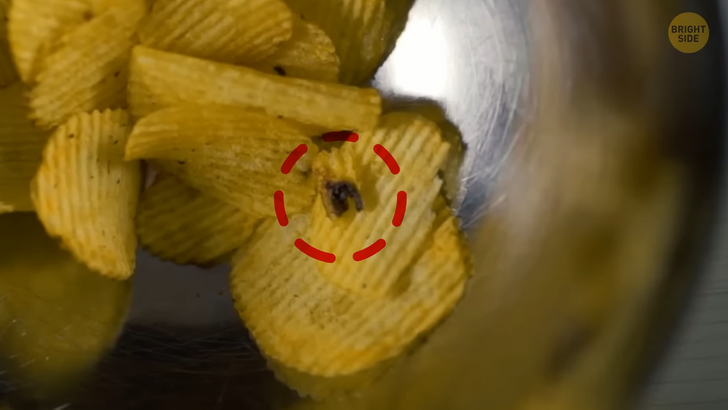
I’m going to carry on with another form of potato. Not because I love every version of potato and I can eat it in all meals from breakfast to dinner but because I want to know what are those brown spots on potato chips. Should we eat or toss them? Consider these as minor imperfections. They don’t affect the safety of the chip. They are there again because of the bruises they get or as a result of frying.
Sometimes you see that your garlic is trying to make more garlic out of itself. Yep, it has sprouted. The question is, is it okay to eat sprouted cloves, or should you throw them? If the green sprout is in the center of the garlic clove, that’s fine. Be aware that the taste of garlic will be stronger than it usually is. It will still be perfectly okay in a cooked meal since it’ll be alongside other ingredients. The taste shouldn’t be that harsh.
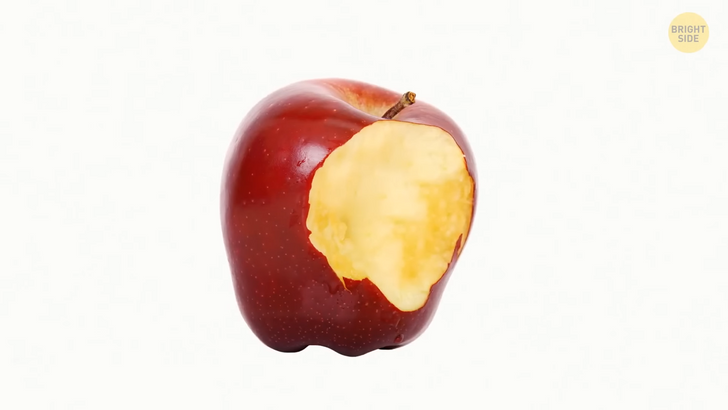
Can we eat an apple with worms? Most people can’t even stand the idea of accidentally eating an apple with a worm, but that’s a cultural thing. So, the answer is yes, we can eat it. After all, “worms add a little protein to the fruit.” These animals don’t carry any harmful parasites. They make their way into the apple. The entrance point of the fruit might have off flavor since it got sort of rotten in time. Besides the taste, the rotten part is all safe to bite. What might not be so safe is eating the fallen apples, though. Those have probably been hanging out on the ground for quite some time. This period might be enough for the harmful bacteria from the soil to sneak into the apple. There were some cases where people experienced health issues by drinking unpasteurized apple juice made from dropped apples. Yeah, the ones that interact with unhealthy bacteria.



